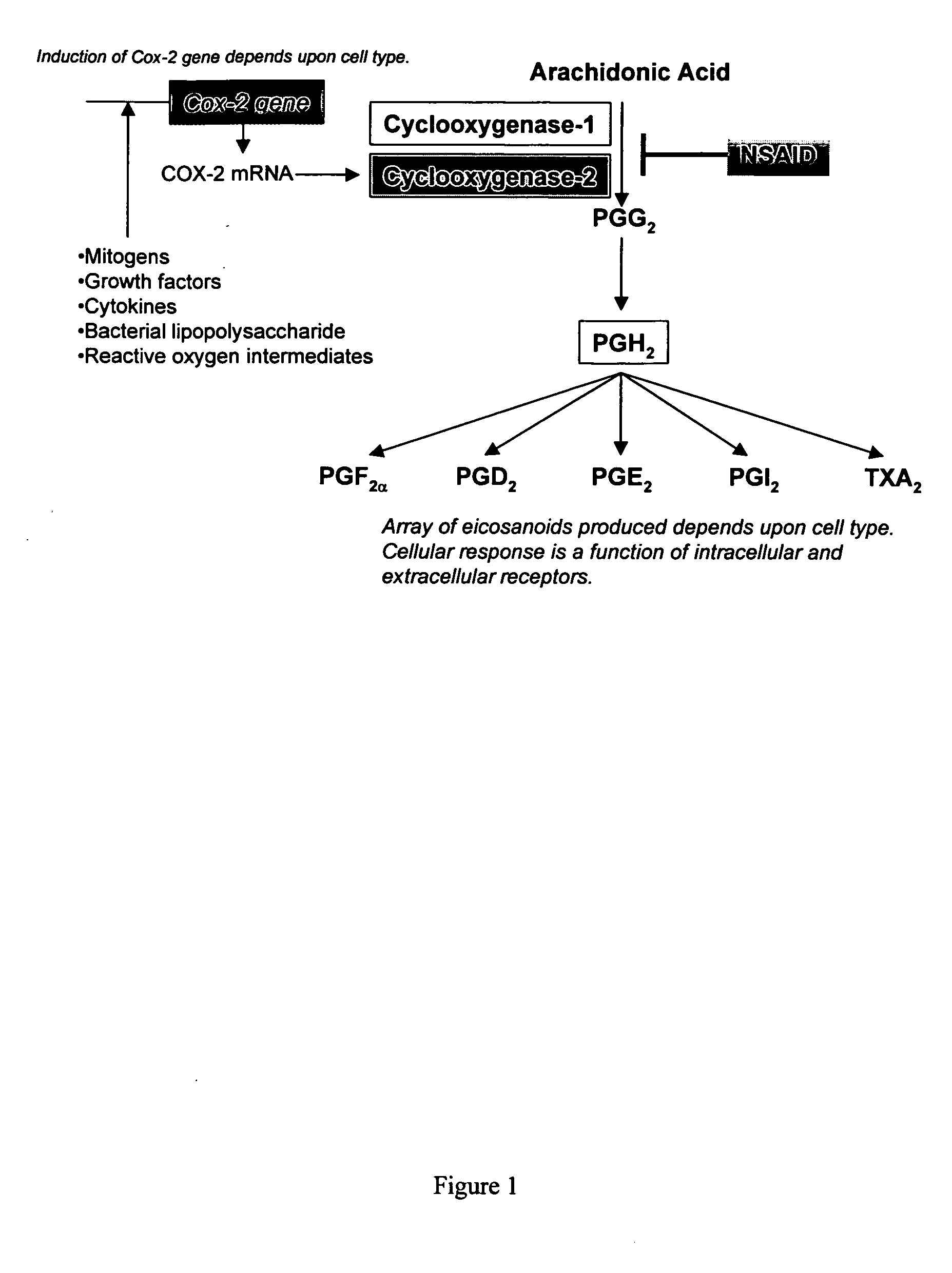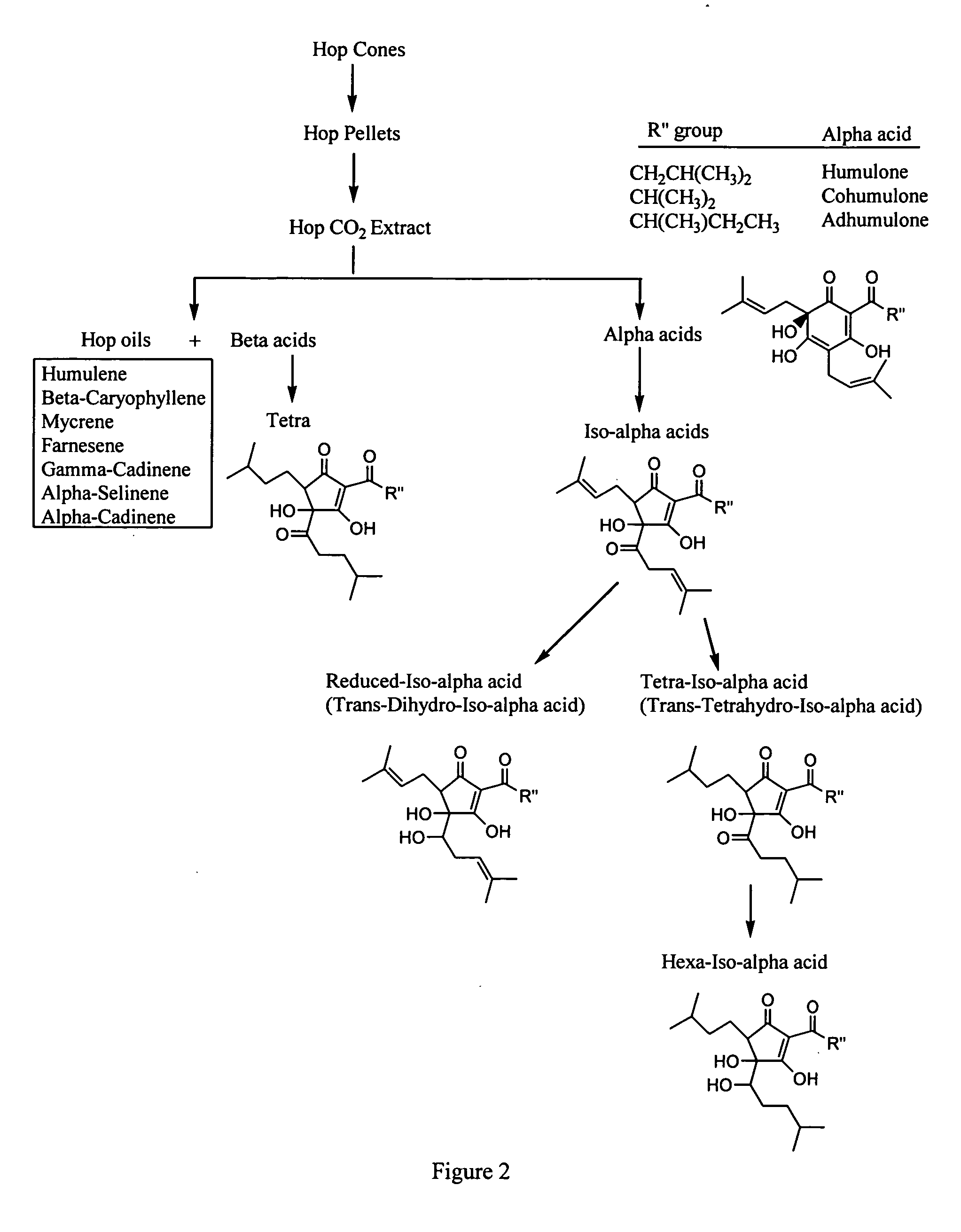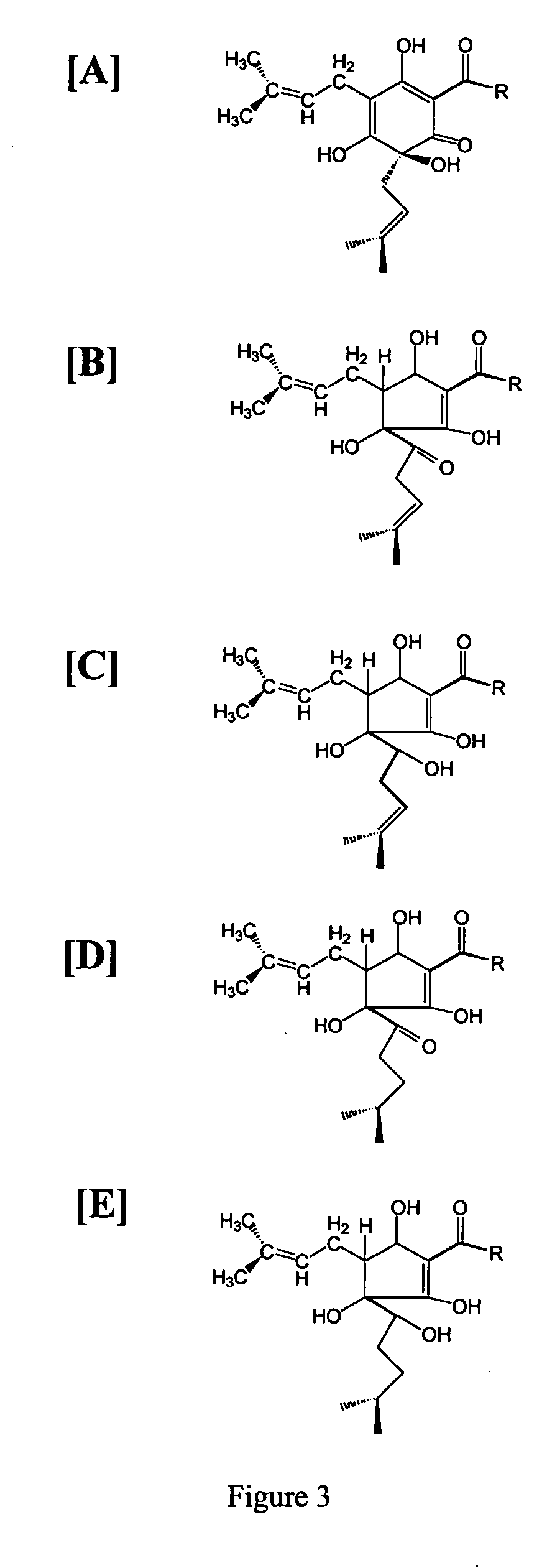Synergistic anti-inflammatory pharmaceutical compositions and related methods using curcuminoids or methylxanthines
- Summary
- Abstract
- Description
- Claims
- Application Information
AI Technical Summary
Benefits of technology
Problems solved by technology
Method used
Image
Examples
example 1
AGS Gastric Mucosal Cells Constitutively Express Both Cyclooxygenase-1 and Cyclooxygenase-2
[0125] Summary—This example demonstrates that the AGS human gastric mucosal cell line, possessing constitutive expression of COX-1 and COX-2, is a model for assessing the gastrointestinal toxicity of cyclooxygenase-inhibiting compounds.
[0126] Equipment used in this example included: an OHAS Model #E01140 analytical balance, a Forma Model #F1214 biosafety cabinet (Marietta, Ohio), various pipettes to deliver 0.1 to 100 μL (VWR, Rochester, N.Y.), a cell hand tally counter (VWR Catalog #23609-102, Rochester, N.Y.), a Forma Model #F3210 CO2 incubator (Marietta, Ohio), a hemacytometer (Hausser Model #1492, Horsham, Pa., a Leica Model #DM IL inverted microscope (Wetzlar, Germany), a PURELAB Plus Water Polishing System (U.S. Filter, Lowell, Mass.), a 4° C. refrigerator (Forma Model #F3775, Marietta, Ohio), a vortex mixer (VWR Catalog #33994-306, Rochester, N.Y.), and a 37° C. water bath (Shel Lab M...
example 2
Inhibition of PGE2 Synthesis in Stimulated and Nonstimulated Murine Macrophages by Hops (Humulus lupulus) Compounds and Derviatives
[0134] Summar—This example illustrates that hops fractions and derivatives inhibit COX-2 synthesis of PGE2 preferentially over COX-1 synthesis of PGE2 in the RAW 264.7 murine macrophage model.
[0135] Chemicals and reagents—Bacterial lipopolysaccharide (LPS; B E. coli 055:B5) was from Sigma (St. Louis, Mo.). Hops fractions (1) alpha hop (1% alpha acids; AA), (2) aromahop OE (10% beta acids and 2% isomerized alpha acids, (3) isohop (isomerized alpha acids; IAA), (4) beta acid solution (beta acids BA), (5) hexahop gold (hexahydro isomerized alpha acids; HHIAA), (6) redihop (reduced isomerized-alpha acids; RIAA), (7) tetrahop (tetrahydro-iso-alpha acids THIAA) and (8) spent hops were obtained from Betatech Hops Products (Washington, D.C., U.S.A.). The spent hops were extracted two times with equal volumes of absolute ethanol. The ethanol was removed by heat...
example 3
Synergy of PGE2 Inhibition Produced by Combinations of Reduced Isomerized Alpha Acids and Curcumin Extract in Human Aortic Endothellil Cells
[0146] Summary—This example describes the effect of combinations of reduced isomerized alpha acids (RIAA) and curcumin on the inhibition of prostaglandin E2 (PGE2) production in the tumor necrosis factor-α (TNFα)-stimulated human aortic endothelial cell model of inflammation.
[0147] The standard equipment used in these experiments is described in Example 1. Chemicals and reagents were obtained as follows. TNFα was from Sigma (St. Louis, Mo.). Prostaglandin E2 monoclonal antibody kit was purchased from Cayman Chemical (Ann Arbor, Mich.). Heat inactivated Fetal Bovine Serum (FBS-HI Cat. #35-011CV) and Dulbecco's Modification of Eagle's Medium (DMEM Cat #10-1013CV) was purchased from Mediatech (Hemdon, Va.). Unless otherwise noted, all standard reagents were obtained from Sigma (St. Louis, Mo.) and were the purest commercially available. Test subs...
PUM
| Property | Measurement | Unit |
|---|---|---|
| Percent by mass | aaaaa | aaaaa |
| Percent by mass | aaaaa | aaaaa |
| Mass | aaaaa | aaaaa |
Abstract
Description
Claims
Application Information
 Login to View More
Login to View More - R&D
- Intellectual Property
- Life Sciences
- Materials
- Tech Scout
- Unparalleled Data Quality
- Higher Quality Content
- 60% Fewer Hallucinations
Browse by: Latest US Patents, China's latest patents, Technical Efficacy Thesaurus, Application Domain, Technology Topic, Popular Technical Reports.
© 2025 PatSnap. All rights reserved.Legal|Privacy policy|Modern Slavery Act Transparency Statement|Sitemap|About US| Contact US: help@patsnap.com



